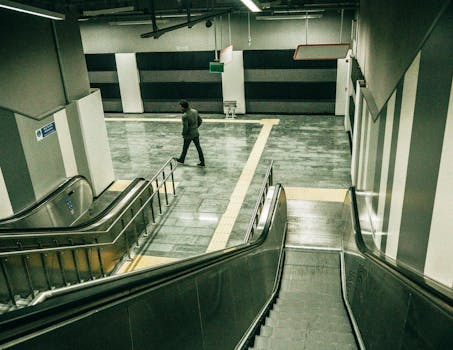The Empathic Infrastructure: Cities That Understand Movement
Imagine a city that understands your needs even before you do. A city that anticipates your every move, understands your daily routine, and caters to your individual needs. This may sound like a utopian dream, but it is becoming a reality thanks to the concept of Empathic Infrastructure. The Empathic Infrastructure is a revolutionary approach to urban planning that focuses on understanding movement and creating cities that respond to the needs of their citizens. In this article, we will explore the concept of Empathic Infrastructure and how it is changing the way we interact with our urban environments.
The Concept of Empathic Infrastructure
The term Empathic Infrastructure was first coined by urban planner and researcher Carlo Ratti. It is a concept that aims to create a symbiotic relationship between humans and cities, where the city is responsive to the needs of its citizens. This approach is based on the understanding that cities are not just physical structures, but they also have a social and emotional dimension. By incorporating empathy into urban planning, cities can become more livable, sustainable, and efficient.
Understanding Movement in Cities
The key to creating an empathic city is to first understand movement. Traditional urban planning focuses on fixed structures and static elements, such as buildings and roads. However, with the advent of technology, we can now collect and analyze vast amounts of data on human movement in cities. This includes data from public transportation, smartphones, and other sensors. By analyzing this data, we can gain insights into how people move within the city, where they go, and what their needs are at different times of the day.
Adapting to People’s Needs
Once we understand how people move, we can design and implement infrastructure that responds to their needs. This can include smart traffic lights that adjust based on real-time traffic data, intelligent public transportation systems that optimize routes and schedules, and dynamic public spaces that adapt to the needs of their users. For example, a park that is bustling with people during the day can transform into a quiet outdoor cinema at night.
Examples of Empathic Infrastructure
Empathic Infrastructure is already being implemented in cities around the world. One such example is the Street Bump app in Boston, which uses data from smartphones to identify and map potholes in the city’s roads. This information is then used by the city to prioritize road maintenance. In Singapore, the government has created an advanced public transportation system that uses real-time data to provide commuters with up-to-the-minute information about train and bus schedules. This has reduced waiting times and improved the overall commuting experience for residents.
The Benefits of Empathic Infrastructure
The benefits of Empathic Infrastructure are far-reaching. By creating cities that understand movement, we can reduce traffic congestion, improve air quality, and enhance the overall quality of life for citizens. Empathic Infrastructure also allows for more efficient use of resources, reducing costs for both the city and its residents. Moreover, by creating infrastructure that caters to the needs of all citizens, we can build more inclusive and equitable cities.
The Future of Cities
The concept of Empathic Infrastructure is still in its infancy, but its potential is immense. As technology continues to advance, cities will become increasingly interconnected and data-driven. This will enable us to create truly empathic cities that cater to our evolving needs. However, it is essential to note that Empathic Infrastructure must always be implemented with the involvement and consent of citizens. Citizen participation and feedback are crucial for creating cities that truly understand and respond to their residents’ needs.
In Conclusion
The Empathic Infrastructure is a game-changer in the field of urban planning. By incorporating empathy into the design of our cities, we can create more livable, sustainable, and equitable environments. With the right approach, technology, and citizen involvement, we can build cities that understand movement and anticipate our needs, leading us towards a more harmonious relationship between humans and their urban environments.











